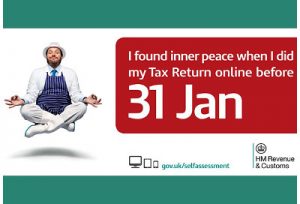Self assessment and the January deadline has come and gone for another year.

Was this years’ Self Assessment just like last years’?
Did you find lots of other things to do such as count the office paper clips?
Anything but look for your invoices and receipts and getting them to your accountant on time.
Did you say ‘never again’?
Will you have to pay a late filing penalty?
Here is the good news.
It really does not have to be that way. With very little effort you can make Self Assessment and your Tax Return a whole lot easier.
Just follow our 4 easy steps to Self Assessment heaven.
Find an accountant who wants to help you.
How will you know if you have found the right one?
Simple.
They will have answers to the next 3 points.
Start using one of the many Invoice and Receipt scanning systems that exist.
For example Receipt Bank or Basecone. These products allow you to process invoices and receipts almost as soon as you receive them with little or no effort. Most systems have two essential features.
- They have mobile apps that allow you photograph and file receipts as soon as you get them.
If the app is really good, it will find most of the relevant information and just ask you to confirm if it is correct.
Job Done. - They will provide a unique e-mail address for suppliers to send their invoices to.
You will just have to confirm the details are correct.
You can do this at any time or your accountant can do it for you.
To make life really easy, why not have the address pre-printed on some cards ready to hand over.
Sign up for electronic banking and provide your accountant with a download of your bank statement.
Don’t worry if you don’t know how to do this. If you have the right accountants they will help you.
With an electronic version of your bank statement, your accountant can start working on your assessment almost straight away. They will be able to match your invoices and receipts to your bank statement and identify anything you have not given them an invoice or receipt for.
Consider a Cloud Accounting system.
There are any number to choose from and if you have the right accountant, they will be able to suggest one.
Many of the Cloud systems are quite straightforward and will suit most small businesses or self employed people.
Some businesses might also be happy for their accountant to do the work for them.
But just keep in mind the following.
- Make sure it does the job you need, not just your accountants.
If your needs are more complicated, look for a system that has add-ons that meet your needs or look for a more appropriate Cloud system. - If you are using an invoice or receipt scanning system, make sure it talks to your chosen Cloud Accounting system.
So what does this all mean for you.
- You will be filing your invoices etc, as soon as you receive them. So no more searching behind cupboards.
You and your accountant will be able to look at the same information at any time. - Your accountant will be able to provide you with a range of frankly more useful services, e.g. doing your VAT return and helping to review your business during the year, rather than waiting for the end of the year when the damage has been done.
Again you will both be looking at the same information - You might avoid a late filing penalty and also an interest payment.
- It’s really not that expensive
Conclusion
Clearly we can’t guarantee a stress free Self Assessment in 2018, after-all you still have to pay the bill.
But we are sure that if you follow our easy steps, it will be a whole lot simpler.
We aren’t accountants, but if you would like to know more about Cloud Accounting or any other IT topic, then Let’s Talk.


